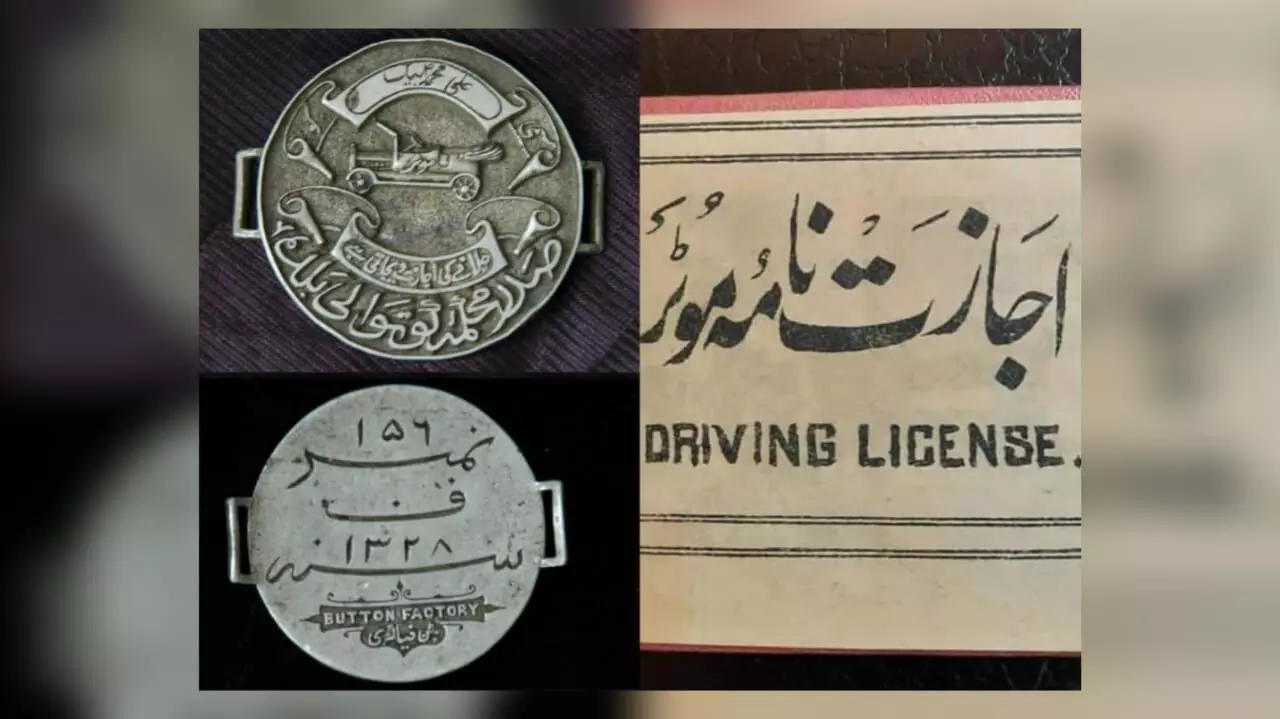Licence to drive: VII Nizam Mir Osman Ali Khan drives home point on right to drive decades ago
Hyderabad's first driving licenses issued, renewed for mere Rs. 2 in Nizam Era

HYDERABAD: In the midst of the Nizam Era, Hyderabad stood as a bastion of rich cultural heritage and forward-thinking governance. Among the many advancements of the time, the introduction of driving licenses marked a significant stride towards modernisation and safety on the city's roads.
The H.E.H 7th Nizam Mir Osman Ali Khan Bahadur, often credited as the architect of modern Hyderabad, introduced driving licenses, significantly influencing transportation practices and paving the way for the future of mobility in the city.
Cars reportedly first arrived in Hyderabad in the 1890s, and in the early 1900s, H.E.H Nizam introduced 'Driving licenses'. The initial driving licenses issued in the early 1900s were metallic, later replaced by paper licenses around 1918-1919.

This was issued in the early 1900s to Ali Mohammad Baig
Interestingly, this transition coincided with the introduction of paper currency printed in London for use in the Hyderabad State during the same year, according to Historian Dr. Mohammed Safiullah.
During the Nizam Era, driving licenses took on a unique form – metallic cards meant to be worn on the left wrist, akin to a watch. Interestingly, most of the early cars in Hyderabad were left-hand side drive vehicles. The iron driving license displayed the phrase 'Permission to drive' in Urdu.

This was issued in the early 1900s to Syed Mir
Paper licenses were written in both Urdu (the official language of Hyderabad until 1948) and English. The driving licenses were signed by the Police Commissioner of Hyderabad, who was also referred to as the 'Kotwal'. It was initially issued for Rs. 2, with renewal fees also at Rs. 2, and it indicates authorisation under Section 2 of 1319F/1919 of the Motor Vehicles Act (MV Act) in Hyderabad Deccan.

This driving licence was issued in the name of Nawab Sultan Ali Khan, in 1919 and was signed by Nawab Rahmat Yar Jung Bahadur (Mohammad Rahmatullah) the Commissioner of Police.
Back then, the roads had very few cars, and although there were only a handful of drivers, they were exceptionally trained and disciplined. Securing a driver's license necessitated passing an exceedingly strict driving test.
Traffic challans, albeit rare occurrences, were indeed part of the landscape during the Nizam Era in Hyderabad. However, they were few and far between, often resulting in nominal fines of just a few Annas.
Despite their familiarity with driving, neither the sixth nor seventh Nizam of Hyderabad were seen personally driving cars. While they possessed the skills and underwent expert training in horse riding, driving cars seemed reserved for the elite few, with only the Nizam and the nobility affording such luxury in the early days of motoring in Hyderabad.

Dr. Mohammed Safiullah, the eminent historian from Hyderabad, has a remarkable collection of historical artifacts, including a driving license dating back to the 1919s. This particular license, issued to Nawab Sultan Ali Khan, bears the signature of Nawab Rahmat Yar Jung Bahadur, who served as the Commissioner of Police at the time. Nawab Rahmat Yar Jung Bahadur was the elder brother of Dr. Safiullah's grandfather, Mohammad Samiullah, who had a distinguished career in the HCS/IAS.
Dr. Mohammed Safiullah said, "Once upon a time, I possessed eight original metallic licenses in my personal collection. Over the years, I've generously gifted many of them to museums worldwide. Presently, I cherish two originals—one issued in the early 1900s to Ali Mohammad Baig and the other to Syed Mir. My quest for such artifacts led me to connect with dealers and collectors, enriching my collection. I've contributed numerous old driving licences to local museums like Purani Haveli and the Chowmahalla Palace Library. These metallic licenses, meant to be tied with a ribbon to the left wrist like a watch, reflect an era when most cars in Hyderabad were left-hand side driven."



